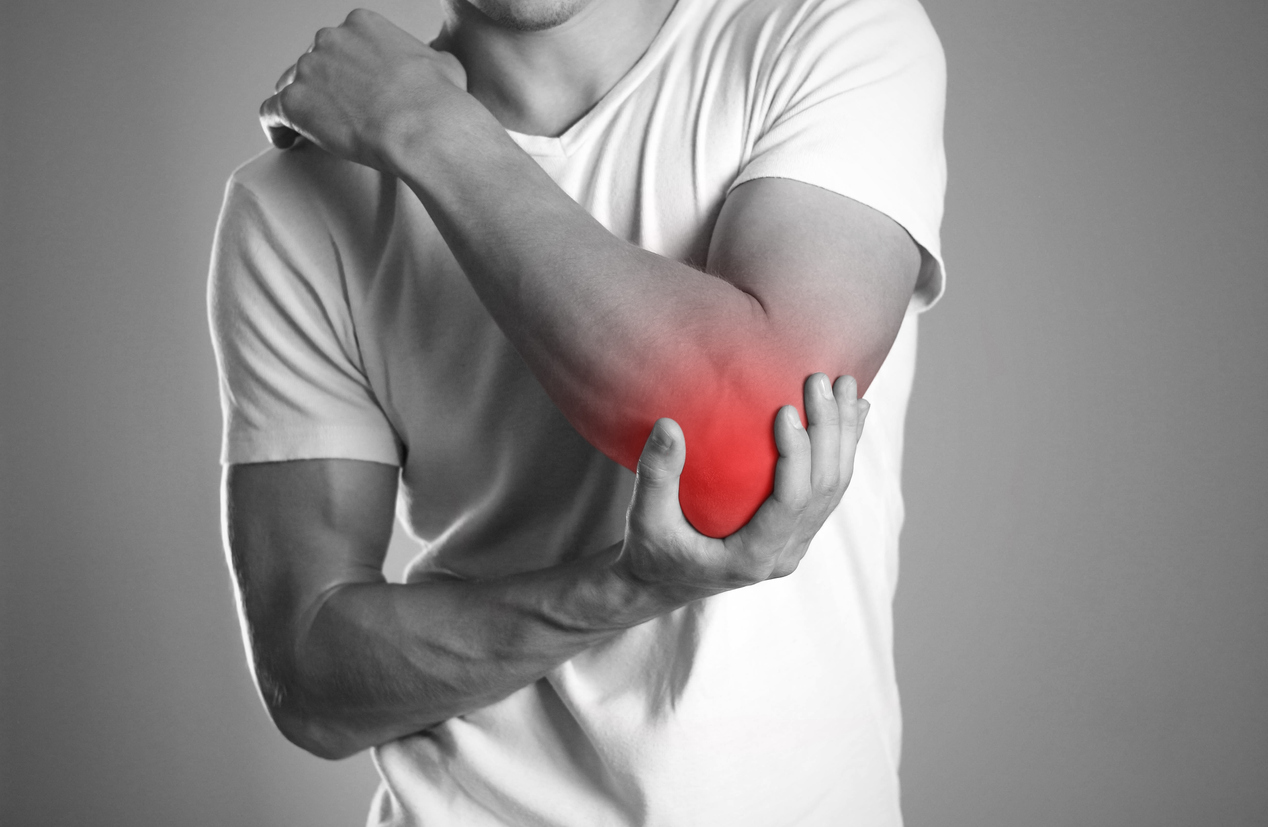
Tennis elbow is a misleading name for a common injury.
While tennis players can be affected by this problem, it also affects baseball players, swimmers, carpenters, plumbers, meat cutters, or anyone who repetitively uses their arms or hands. It can be so painful that lifting your morning cup of coffee can be difficult and painful.
What is tennis elbow?
Tennis Elbow can be acute, caused by inflammation, or chronic, caused by degeneration of a tendon.
In acute tennis elbow, you will find the inflammation in the tendon and bony bump at the outer part of the elbow. This inflammation happens because of repetitive stress placed on the forearm muscles. The repetitive stress causes the tendons of the elbow to become irritated and injured, leading to inflammation in the elbow and forearm.
Chronic tennis elbow is most seen in non-athletes between the ages of 35-55 years old. In most cases, it is a result of tendon degeneration, which causes normal tissue to be replaced by a disorganized arrangement of scar tissue. Scar tissue makes the area become weaker and more prone to future injury. It can happen as a result of repetitive stress.
How do I know if I have tennis elbow?
Tennis elbow will cause pain in the bony knob on the outside of your elbow. This is where the injured tendons connect to the bone. You may also feel pain in the upper or lower part of your arm.
Tennis elbow sufferers may feel pain when they;
? Lift something
? Make a fist or grip an object
? Open a door
? Raise your hand or straighten your wrist
? Type on a computer
How do I treat tennis elbow?
Chiropractic treatment is effective for tennis elbow. Your chiropractor will assess your pain and first determine the cause of your tennis elbow.
Chiropractic treatment for tennis elbow may include:
• Adjustments to the elbow and wrist which mobilize the joints and decrease compression and inflammation of the joints.
• Myofascial release to the forearm muscles which help get rid of adhesions/scar tissue in the muscles and tendons.
• Electrical muscle stimulation to help decrease muscle tightness, inflammation, and improve circulation/promote healing.
Tennis elbow should not be ignored. Without the proper treatment it is unlikely to go away on its own. The pain can even begin to spread to the forearm and the wrist. Temporary bracing can help stop tennis elbow from worsening, but it’s a Band-Aid rather than a cure.
How do I prevent tennis elbow?
Stretching – For those who know their work or play will involve a lot of repetitive arm motions, stretching will be your best preventive measure against tennis elbow. Stretching these muscles works to strengthen them over time. Good stretches include: Straightening your arm with your elbow straight and pulling your fingers back towards your body and hold it for 1 minute. Next, pull your fingers down towards the floor and hold for 1 minute. These stretches should be repeated 3-4 times per day.
Squeeze and release exercise – Strengthening your wrist muscles will help to avoid tennis elbow. Ironically, a great tool to accomplish this, is a tennis ball. Grip a tennis ball in the hand of your injured arm. Squeeze and release the tennis ball for 2-3 minutes, 3-4 times a day.
Tennis elbow bracing can be beneficial to take strain off the injured tendon until it heals. They work best when you are doing things that cause irritation to the elbow like gripping, lifting, repetitive typing, etc. They can be removed when you’re not using the arm.
